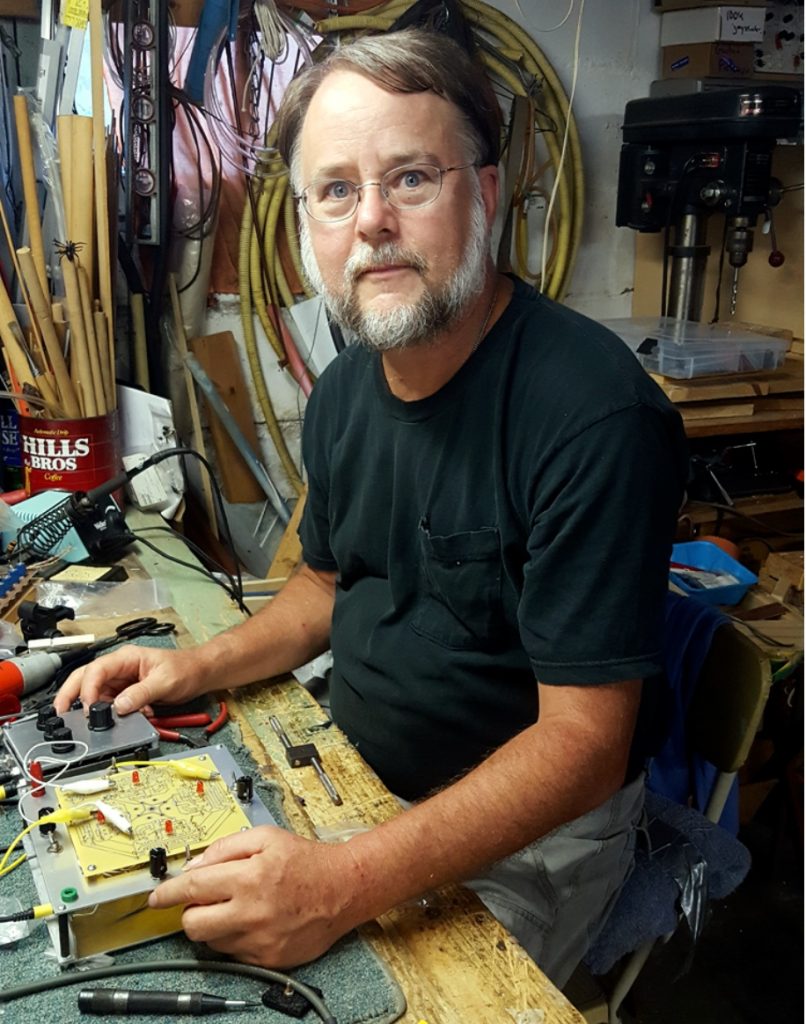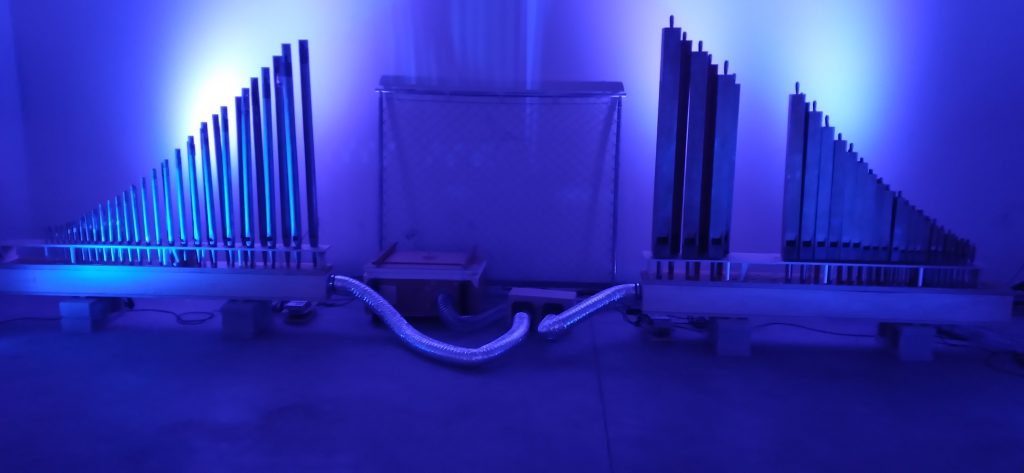by Mike Telin

But what is a sound installation? Basically it’s placing a sound system in a room. Yet describing a sound installation becomes a bit more complicated — is it visual art? Is it experimental music? Or is it a combination of both? In the end, does it need to fit into any category? After all, it is about the experience — aural and physical.
By far the most interesting experience I have had with sound was standing inside an organ case while the pipes were being tuned. To feel the dissonances and hear the beats gradually move into a perfect unison is something everyone should experience.
So it was a wonderful surprise to walk into the Pivot Center on June 11 at 11:30 am to be greeted by sound artist Bob Drake, whose installation Dröhnen/Dröna was featured as part of this month’s Re:Sound Festival of New and Experimental Music. Drake showed my colleague and me into a large room bathed in soft shades of blue. On the floor, along the left wall, were two ranks of organ pipes and a traditional pipe organ windchest.
Drake explained that everything was controlled by software he had written that would trigger the pipes via MIDI. The software was being altered in real time during performance, and additional sound alterations could be made by manipulating the airflow into the pipes.
Off to the side on a table sat an analog modular synthesizer that Drake had built, which is used to produce stereo electronic sounds to complement and/or interfere with the tones of the pipes. He noted that the synth is not controlled by the computer, but manually, through a keyboard that also sat on the table.
The work’s title — Dröhnen is the German word for “to roar” and Dröna is Swedish for “to drowse” — describes the piece perfectly, as its complex drones gradually build and recede. And within each drone, small pitch or timbre changes produce a series of interacting beat frequencies and dissonances/consonances while the electronic sounds ebb and flow.
“Go stand in the middle of the room,” Drake said. “You can hear those changes. And the sound changes as you walk around the room.” Not only could you hear the subtle changes, you could feel them as well. “It’s all part of ‘Deep Listening,’” he said, alluding to the practice popularized by Pauline Oliveros.
In 2020 Drake earned a Deep Listening Teaching Certificate from the Deep Listening Institute, based in Kingston, New York. He also teaches sound art, media installation, and electronics at the Cleveland Institute of Art.
When did the concept of “sound art” begin? An early example is Luigi Russolo’s 1913 Intonarumori, or “Noise Intoners,” a set of experimental musical instruments. Speaking of which, Drake was a member of Luciano Chessa’s Orchestra of Futurist Noise Intoners, who performed at the Cleveland Museum of Art in 2015.
While it’s fun to have “intellectual” conversations about a project like Dröhnen/Dröna, Drake said that the best part is seeing how the many kids who have visited the installation have reacted to the changing sound as they’ve moved throughout the space.
“You can change things even more with the keyboard,” he said, pointing to the table. My colleague and I took him up on the offer. We started to play — major chords, minor chords, and then any combination of keys just to hear what would happen. It is true that time flies when you’re having fun.
Published on ClevelandClassical.com June 22, 2023.
Click here for a printable copy of this article





